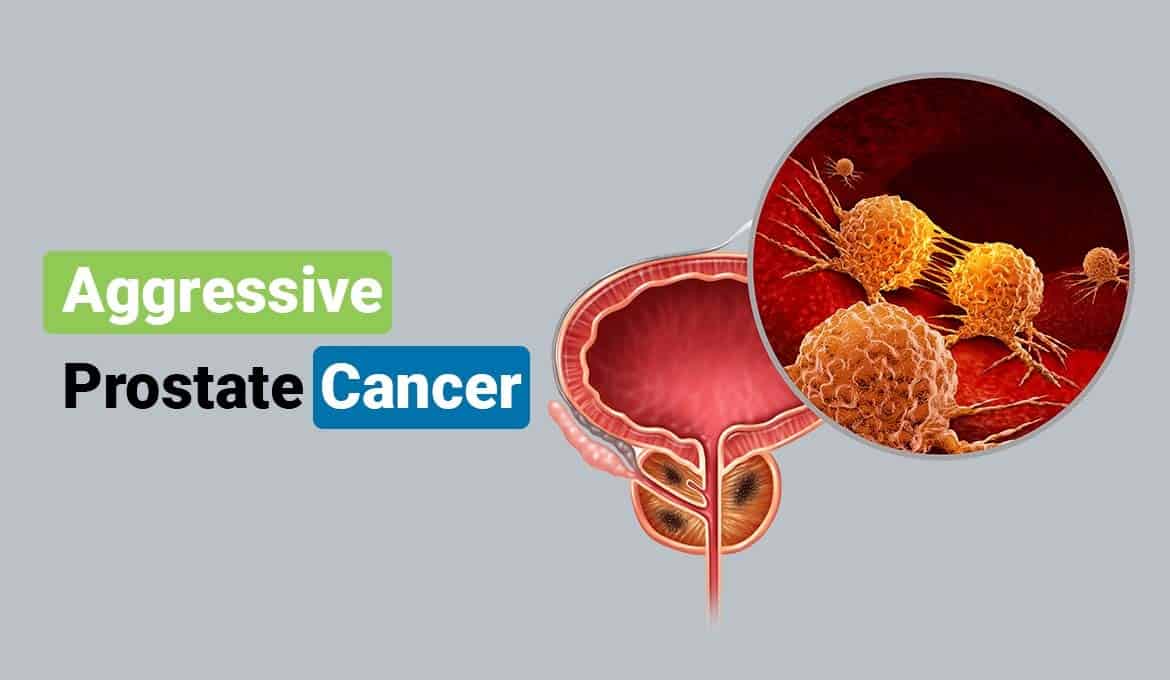
It was Tony Stark who famously said, “No amount of money ever bought a second of time”. It’s important to realize that health is indeed wealth because it gives us more time to cherish the world and the people around us.
Prostate cancer is one such health condition that can rob us of precious time. It is a common form of cancer affecting a large percentage of men, especially those over the age of 50.
It is important to stay well-informed in order to identify and tackle this threat rather than live in blissful ignorance.
Analyzing our lifestyle patterns and determining our risk factors for prostate cancer can help us beat it and lead long and fulfilling life. This can be achieved by understanding the root causes of the disease and the likelihood of contracting it.
What is the prostate?
The prostate is a small organ – about the size of a walnut – which is a part of the male reproductive system. It is present deep inside the groin, between the bottom of the rectum and the penis.
The prostate gland consists of seminal vesicles, testicles, the penis, and the prostate. The prostate supplies seminal fluid, which mixes with the sperm. The seminal fluid is vital in helping the sperm travel and survive.
The prostate is an interesting organ because, while it is vital for male reproduction, it’s not essential for survival.
Prostate cancer develops when the cells in the prostate go through changes that affect their DNA profile, which results in the cells growing in an obstreperous manner.
Prostate cancer is one of the most commonly occurring types of cancer among men. It is known to be the second most common type of cancer affecting men across the world. It is also identified as the 5th leading cause of mortality due to cancer.
Key Risk Factors
The likelihood of prostate cancer occurring in men is determined by three risk factors:
1. Age
Young men are unlikely to be afflicted with prostate, as per statistics. In fact, 99% of prostate cancer cases are found in men aged above 50 years, as analyzed by the World Cancer Report, 2014.
2. Family History
The chances of getting prostate cancer increases by 2-3 times when there is a family history of suffering from this disease, especially when a first-degree relative has been affected by this.
3. Ethnicity
Ethnicity is also observed to play a role in determining the likelihood of getting prostate cancer. Case in point, studies show that black men are more likely to have prostate cancer.
This, along with the factor of family history, is clubbed together to draw the inference that genetics play a huge role in determining the likelihood of prostate cancer occurring in a given man.
Additional Risk Factors
Other secondary risk factors include:
i). Diet
It has been observed that men who follow a plant-based diet are at a lower risk of being diagnosed with prostate cancer.
In fact, it has been found that men who follow a vegan diet are consistently at a lower risk of contracting prostate cancer.
On the other hand, men who heavily consume processed meat and red meat are at a higher risk for prostate cancer.
ii). Body Weight
Obesity has also been observed to increase the risk of prostate cancer. Studies show that men battling obesity are 34% more likely to die due to prostate cancer.
Other related factors, such as a lack of exercise and high blood pressure, have been linked to a greater risk as well.
Prostate cancer, in most cases, develops slowly and over a period of time. The symptoms may not be observable for a long time. Therefore, it is important for men to get screened regularly after they cross 35.
Getting tested at least once a year helps you combat the disease while you still can rather than manage it after the fact.
Aggressive Prostate Cancer: Diagnosis and Growth Rate
An aggressive cancer is defined as “a cancerous tumor that is observed to form, grow, or spread at a faster rate than a regular tumor”. This type of cancer tends to branch out and affect the rest of the body.
Prostate cancer is generally slow-growing. It has been observed that many men die of other causes before the effects of prostate cancer begin to appear. An aggressive form of prostate cancer, however, can spread quickly to other body parts, including the bone.
i). Initial Screening
Initial screening for prostate cancer is generally done using 2 tests:
– Rectal Exam
Screening for prostate cancer is generally done using a digital rectal exam.
In this test, a doctor inserts a gloved, lubricated finger into the patient’s rectum to examine the prostate and check for any abnormalities in size or shape.
– Antigen Test
Alternatively, a prostate-specific antigen test can also be performed by using a blood sample extracted from the patient’s veins. Antigen levels are tested in the blood sample to check whether they are higher than normal.
ii). Further Testing
If any abnormality is detected in the screening process, further tests are conducted to ascertain the diagnosis. This is generally accomplished by performing an ultrasound to get a better picture of the prostate using sound waves.
In some cases, magnetic resonance imaging, or MRI, is performed to get a more detailed picture of the prostate. To determine the presence of cancer cells, prostate tissue samples may be extracted via a prostate biopsy.
Once it has been determined that the patient is, indeed, afflicted with prostate cancer, the next step is to determine, at the earliest, whether it is aggressive. Early detection of aggressive cancer can increase the chances of successful treatment.
iii). Detecting the stage of cancer
The initial determination of the grade of cancer is done using the Gleason score. It is a scale used to assess the biopsy report of the prostate tissues. A Gleason score of 6 and below indicates that the patient has low-grade cancer.
A score of 7 is considered to be medium-grade cancer. Having a Gleason score of 8-10 indicates high-grade cancer.
Another lesser-used technique is Genomic testing. Cancer cells are tested to determine the presence of gene mutations. This might help in devising a treatment strategy for patients.
In aggressive cases of prostate cancer, certain tests are done to determine whether the cancer has already spread beyond the prostate. Tests such as bone scan, ultrasound, MRI, CT scan, and PET scan are utilized.
iv). The Timeline
Normally, prostate cancer takes up to 8-15 years to spread. This is observed in as much as 80% of cases. However, 1 in 5 cases may be more aggressive, resulting in cancer spreading faster.
This rate differs with every patient and is generally determined using the Prostate-specific antigen test or the PSA test. It is ascertained by the rate at which the antigen level doubles in the blood.
One of the more aggressive cases of prostate cancer can spread as quickly as 14 months. However, this is extremely rare and only occurs in 1% of cases. In most cases, it takes more than 2 years for an aggressive form of prostate cancer to spread.
You May Also Like: Can Masturbation Cause Prostate Cancer? – A Detailed Guide
Options for treatment
Immediate treatment may not be required in most cases of prostate cancer. The doctor will first observe the severity before recommending treatment based on the specific level of cancer in a given patient.
That being said, there are numerous treatment options available for the treatment of prostate cancer.
a). Early Detection
Early detection is very helpful in successful treatment. Even the most aggressive forms of prostate cancer can be treated when detected early.
b). Surgery
If the cancer is confined to the prostate, it is possible to treat it using surgery.
c). Radiation Therapy
Radiation therapy is another treatment used to eliminate cancer cells from specific regions.
d). Freezing/Cauterizing
In cases where the affected region is very small, freezing or heating of the prostate tissue is considered.
e). Hormone Therapy
In aggressive cases of prostate cancer, hormone therapy is used.
Prostate cancer cells require testosterone for growth. Hormone therapy limits testosterone levels through the use of medication.
f). Chemotherapy
For patients who don’t respond to hormone therapy, chemotherapy is used. This kills cancer cells that are showing rapid growth.
g). Immunotherapy
Immunotherapy seeks to engineer the body’s immune system to fight cancer cells. Cancer cells hide from the immune system by producing protein. Immunotherapy interferes with that process by the use of pills to stop cancer cells from producing protein.
How to Proceed?
Getting diagnosed with cancer can be daunting. If an early detection has been made, it is quite possible to contain the effects of prostate cancer. While it may not be easy, maintaining a positive outlook and taking care of your mental health is key when it comes to managing or treating cancer.
It is important to reach out to family and friends for support. A support system will help you handle the various changes you have to go through while treating cancer.
It is also vital to keep yourself well informed about the diagnosis. Understanding the disease and the various ways you can treat it will help you make informed decisions.
It also helps you ask your doctors the right questions that will give you the answer that you’re looking for, rather than going through bad news all over again.
Reaching out to other patients who have been diagnosed with prostate cancer can be cathartic, including reaching out to the ones who have overcome their cancer.
This helps create a sense of community and helps you understand that you are not alone in the fight. It also serves as an inspiration to know how many people have combated prostate cancer and have survived.
Conclusion
Prostate cancer is among the most common forms of cancer among men. Men need to have a basic understanding of the disease and its risk factors, as this information will surely come in handy in the future.
Staying informed means you know what to look out for, which will be greatly beneficial because early detection can go a long way in helping treat the disease.
Therefore, it is highly recommended that men get tested once every few years after turning 35, and those with high-risk factors get checked more frequently to help detect prostate cancer at the earliest.
While prostate cancer is generally slow to spread, it is important to remember that even its most aggressive form can be treated with early detection.
Being well-informed can help you beat cancer.
FAQs
Q1: Is regular screening for prostate cancer recommended for all men?
Ans: While regular health check-ups are recommended for all men, it is not necessary to get screened for prostate cancer unless you have a risk factor. Men over the age of 50 are recommended to get regularly screened for prostate cancer. Men with other risk factors, such as obesity, race, or family history, can get screened from a slightly younger age (45).
Q2: Is prostate cancer life-threatening?
Ans: While prostate cancer has the potential to be life-threatening, it is highly treatable. Early detection can help treat even the most aggressive cases of prostate cancer.
Q3: Is surgery a necessary treatment for prostate cancer?
Ans: In many cases of prostate cancer, there is no need for immediate treatment at all. The treatment opted for varies from case to case. It is helpful to be informed about the different treatments available and discuss them with your doctor to determine the right course of action.
Q4: Can dietary choices impact the risk of prostate cancer?
Ans: Studies have found that men following a plant-based diet, specifically a vegan diet, are at a lower risk of prostate cancer. Conversely, it has also been found that men consuming a high amount of processed meat are at a higher risk of contracting prostate cancer. Furthermore, obesity is also linked with a higher risk for prostate cancer.
Q5: How to beat prostate cancer?
Ans: Early detection goes a long way in helping treatment. Men at risk should get screened regularly. Apart from this, it is important to keep well informed about the disease.
Q6: What do I do if I am diagnosed with prostate cancer?
Ans: Being informed helps avoid panic in case of diagnosis. Reaching out to friends and family helps create a support system to tackle it mentally. Getting in touch with other patients and survivors also helps create a sense of community that can form a symbiotic relationship.
Read Also:










